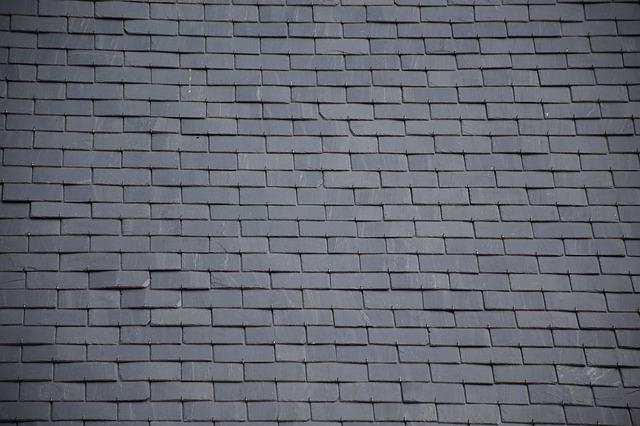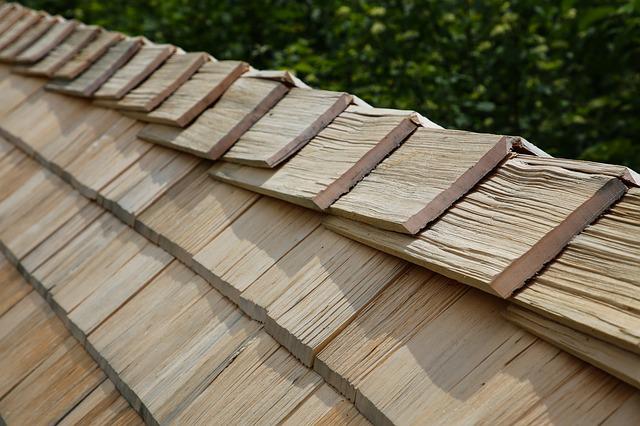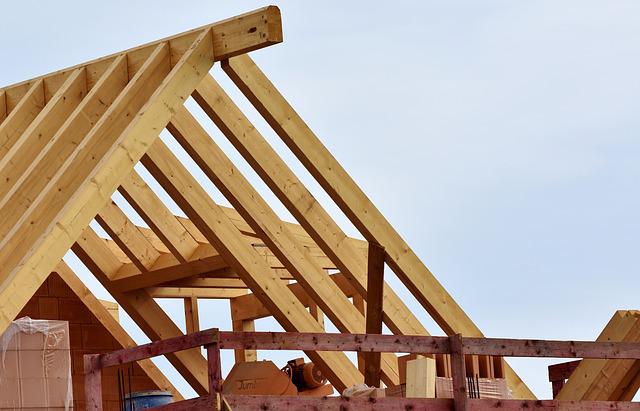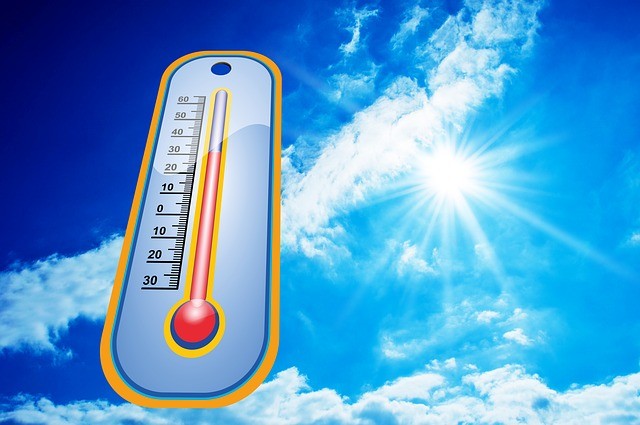Extreme weather events and extended periods of above-average heat rise as the planet continues to warm. In these scorching regions, the roofs take the most of the sun’s wrath since that’s where it sits all day long. Knowing the 5 best roof types for California ensures that your roof will not only shield you from the elements but also last longer.
Even though the weather in each California County is unique, most would agree that it is consistently hot. The climate varies widely over the state, from the Mediterranean to scorching desert to semi-arid to even continental.
Yet, roofing’ primary function is not only to shield you from the elements. A roof that isn’t well-made may deteriorate in the heat, developing cracks and eventually collapsing. Furthermore, it allows solar radiation to penetrate the surface and warm the inside of a building. As a result, certain materials are significantly less energy-efficient than others in house cooling, which drives energy expenses.
5 best roof types for California
1. Terra-Cotta Tiles and Ceramic Roofs
There’s a good reason terra cotta is such popular roofing material, and it has nothing to do with how it looks. However, if you’re going for a Spanish colonial aesthetic, you might like it.
When these tiles are baked in a kiln at high temperatures, they undergo a process called “terra cotta,” which translates to “cooked earth” in Italian. This makes the tiles resistant to rain and snow. There is historical evidence that clay tiles can withstand high temperatures for decades; they often persist for half a century or more.
Roofs and interiors benefit from the curved form of the tiles because it promotes airflow beneath the surface, reducing heat buildup. The tiles are heavy and expensive, but other than that; this energy-saving option is a great style decision.
Because clay tiles may be up to four times as heavy as asphalt shingles, many homeowners discover that they need to support their roofs before installing terra-cotta. However, they are also one of the most costly options, costing $700 to $1,000 per square (or 100 square feet, for those who aren’t in the know). With that said, they last a long time and might eventually pay for themselves.
2. Concrete Tiles and Slab Roofs
Even though concrete tiles aren’t as common as slate or clay ones, they hold up quite well in high temperatures. These tiles are a mixture of fibers and cement, making them ceramic yet lightweight.
They may reflect up to 77 percent of the sun’s rays and last a long time. Various cold hues are available for concrete tiles, but the dazzling white kind is the most efficient in terms of temperature regulation. Even if the white has been discolored, a good power-washing will restore it to its former glory.
Roofing suppliers also produce more visually pleasant concrete tiles with a tinge of color. S-tiles are one of the most energy-efficient alternatives available.
Like many terra-cotta tiles, they include an undulating design to facilitate ventilation between the roof and the decking below. That, in turn, has the knock-on effect of decreasing heat transmission and cooling expenses.
3. EPDM Roofing Membranes
EPDM membranes, often known as a synthetic rubber or ethylene propylene diene monomer, are frequently used as roof coverings despite not being made of natural rubber. It is chemically constructed to withstand severe environments with remarkable durability.
There was no evidence of deterioration or cracking under field testing conditions of high UV exposure. Moreover, its minimal energy overhead during production is frequently lauded in life-cycle assessments. EPDM coated with titanium dioxide, which makes the material lighter in color, is more effective at reducing heat than uncoated EPDM.
The roof’s surface will retain less heat and more light with this color scheme. But homeowners should use caution when employing “cool roof” strategies to cut energy costs. Research has established that this technique may have far-reaching and damaging consequences on the ecosystem.
4. Metal Roofs
Modern, warm-climate cities like Austin and Los Angeles use metal roofing. Metal roofing has seen its fair share of ups and downs throughout history.
Metal has been around since Ancient Rome, but it suffered during the 1980s and 1990s when it was labeled as a cheesy, agricultural substance. However, this adaptable and long-lasting material has recently seen a veritable resurgence.
Homeowners concerned about the environment will appreciate that many aluminum, steel, and copper roofing products are made from recycled materials; aluminum roofing systems commonly incorporate recycled soda cans. It’s not quite that simple, though.
Aluminum roofing systems with an inherent plenum between the metal panels and the decking are energy efficient and ideal for hot climes, where cooling costs make up most of the homeowners’ energy expenditures.
5. Green or “Living” Roofs
It may seem like something out of The Hobbit, but a roof garden offers surprising use beyond its aesthetic appeal. Roofs covered in vegetation, or “green roofs,” offer the dual advantage of lowering heat loss and absorption, making them a good option in hot and cold areas.
Scientists also mitigate the “heat island effect,” or the rise in urban temperatures caused by the sun’s reflection on asphalt and metal.
And since they replenish oxygen levels, they are an invaluable resource in densely crowded regions. Don’t be shocked if you find your neighbors gardening their roofs one day, even if this isn’t the most common roofing material by any stretch of the imagination in hot-weather towns. Any material will do if it can shield your house from the elements and keep it cool.
Roof types considered the best for Southern California
Everyone appreciates Southern California’s lengthy, pleasant winters and mild summers. This kind of weather might be lovely, but it can also put a lot of strain on your roof. Water leakage is possible if your roof isn’t made of weather-resistant material. We’re here to show you some of the greatest options for roofing that will keep your house safe, even in the face of California’s erratic climate.
1. Metal Roofing
Metal roofing used to be reserved solely for industrial buildings. However, with the help of several technical developments, metal is now widely used in residential construction.
Since other types of roofs are prone to catching fire in California’s severe summers, this lightweight, fire-resistant, and durable option is ideal.
As a bonus, metal roofing comes in various colors and materials, such as aluminum, copper, and stainless steel. Even tiles available are designed to look like cedar shakes or asphalt shingles.
2. Concrete and Clay Tile

Roofs made of clay tiles are common in California and other areas with dry climates. Compared to rubber or metal, which may make the home’s inside as hot as the outside, this is a far more practical option. Many old buildings are still standing today because they were constructed with clay, an extremely durable and long-lasting substance.
The color, form, and composition of natural light may efficiently avoid heat capture, making it ideal for use in keeping homes cool. Earthquake and wind resistance are two other benefits of clay tiles.
Despite their durability and resistance to fire, concrete and clay tiles are noticeably heavier than their lighter counterparts. As a result, it’s possible that your roof has to be strengthened. The labor cost to build such a roof would rise accordingly, so if cost cutting is a priority, you may want to look into other materials, such as metal.
3. Slate Roofing

Slate is renowned for its amazing durability and density. Because of its mineral and chemical makeup, slate has a distinctive tint. The look of the weathered slate is similarly affected by these factors. Permanent slates seldom shift color due to weather, although weathering slates sometimes do.
Inexpensive alternatives exist, but a slate roof will cost you a pretty penny. This is due to the high price of slate and the high cost of processing it. However, it is incomparable in its natural beauty, which is why so many people are interested in purchasing one.
Slate tiles are extremely resistant to heat and other environmental factors. Also, its naturally reflecting characteristics aid in lowering heat absorption. Pale hues or earth tones, like grey, moss green, or a light brick red, will reflect the most heat. Slate tiles have several advantages over other materials, including their basic elegance, vast availability, and durability throughout time.
4. Asphalt shingles
Most Californians choose asphalt shingles as their roofing material due to their low cost, durability, and ease of installation, all of which makes them ideal for the state’s climate. Choose a high-quality shingle that can withstand the sun’s UV rays, as asphalt breaks down with time.
Additionally, asphalt shingles are available in three distinct quality levels: decent, better, and best. The most expensive option is what the industry calls “luxury asphalt shingles.” This roof is manufactured to seem like more expensive options like slate and cedar shakes.
The length of time asphalt shingles are guaranteed to last is inversely proportional to the substrate quality they are installed on. Of course, you’d expect the greatest warranties on the most expensive shingles.
Roof types considered the best for Northern California
1. Asphalt Shingles

Research shows that this roofing material’s low price, simple installation, and long lifespan make it the preferred option for more than 75% of American homeowners. These are created from fiberglass mat that has been doused in asphalt and covered in granules of various colors.
As a roofing material, they have the lowest insulation quality and the shortest lifespan of any option. The most affordable roofing material is standard shingles, which may be purchased in a rainbow of colors.
2. Metal Roofing
Historically, metal roofs were only installed on industrial buildings, but because of recent technical advancements, more and more homeowners are making the switch. Available in recycled copper, aluminum, and stainless steel.
Metal roofs can be made to resemble wood shingles or shakes, slate, or tile, among other materials. A metal roof is not only long-lasting but also lightweight and resistant to fire. Besides its durability, it is also considerably lighter than other materials and can withstand extreme temperatures.
3. Wood Shingles and Shakes

Various types of high-quality wood, such as cedar, redwood, and southern pine, are used to make shingles and shakes. Machine-made shingles are smoother than their handcrafted counterpart, the rougher-looking shake. Compared to asphalts, the cost of this roofing material skyrockets because of its superior aesthetic appeal.
However, its usage has been questioned in recent years due to safety concerns associated with its flammability and susceptibility to mold growth after prolonged wet weather.
Class ‘A’ and ‘B’ shingles and shakes are designated based on their quality. Easily accessible and widely used, Class ‘B’ items have been pressure treated with fire retardants.
Be sure there are no prohibitions on installing a wood roof by contacting the appropriate authorities in your area.
4. Clay Tile and Concrete Tile
When compared to concrete tiles, which are created from Portland cement and sand, clay tiles are more eco-friendly since they are made from natural clay and then burnt in a kiln. These tiles are an economical alternative to more expensive slate that provides similar benefits.
Because of its high weight and expense compared to asphalt shingles or fiber cement products, your roof may need reinforcement if you choose tile because of its high durability and fire resistance.
5. Slate Roofing
Slate is an inert, naturally dense substance. Its chemical, and mineral makeups govern the hues they display. Slate comes in many different hues because of the aforementioned components’ wide range of variation. These characteristics also affect the slate’s sensitivity to weather-induced color changes.
Slates that change color the least are called “permanent,” while those that do so the most are called “weathering.”
Since the slate is so heavy, the roof must be reinforced before it can be re-roofed. Although it is one of the most costly steep slope roofing materials, slate has the advantages of being non-leaching, lasting for hundreds of years, and having a natural beauty that cannot be matched. The process of setting it up is time-consuming and complex.
Popular California Roof Styles
There are a lot of different kinds of roofs, maybe even hundreds. However, there are several architectural styles that work particularly well in California.
1. Contemporary
Houses constructed in the 1950s to 1970s often have roofs in the contemporary style. In this forward-looking age, minimalism, straight lines, and geometric forms were prized.
Because Californians often pushed the envelope of acceptable architecture, modern roofs were especially popular there. Modern roofing materials, such as asphalt shingles or metal, were typically used in contemporary homes, and exposed roof beams were a common architectural feature.
2. Spanish
California’s distinctive Spanish-style rooftops are based on the originals in Spain but have a colonial twist. Roofs in the Spanish style have a modest slope and are typically covered in a vibrant, rusty-orange ceramic tile.
The waves in the Spanish tiles seem to overlap and merge in the roof troughs, creating a beautiful visual effect. The beauty of Spanish tiles is that they may be used in climates ranging from constant cloudlessness to intense downpours. That climate and language are very typical of California!
3. Craftsman
Between 1905 and 1930, Craftsman homes—also known as arts and crafts homes—were extremely fashionable. Built-in wooden furniture and shelves were prominent aspects of this design. The roofs of craftsman-style houses were also distinctive. Overhanging eaves were common, ornate braces and gables, and framed porches were a common sight. Exposed rafters were a common feature in craftsman-style houses.
4. Mediterranean-Style
The widespread diffusion of California’s Spanish influence has boosted the fortunes of the closely related Mediterranean roofing style. The idea of a roof in the Mediterranean style was initially proposed by architects in 1915, but it wasn’t until the 1920s and 1930s that it took off in California.
Numerous aspects of the roofing of Mediterranean-style buildings may be traced back to their Spanish origins. They were easily distinguished by their low roof pitches, overlapping tilework, and stucco facades.
Do You Need a New Roof?

When extreme weather, such as high winds or hail, causes roof damage, it is clear that immediate repairs are required. However, a little spot or leak on the ceiling might warn that it needs to be repaired or replaced. If you notice that warning sign, you may be able to fix it for cheap, or you may have to completely replace it.
With an unfinished attic, you may be able to trace the water stain along a rafter or stud to the point of origin and fix the leak on your own. You should have a professional roofer check it out and make any necessary repairs. Our advice to homeowners is not to attempt repairs independently, especially if the roof has a steep slope or requires a steep ladder.
Putting caulk in a gap, replacing a few shingles, or putting in flashing (a waterproof membrane or metal sheet that redirects water) might be all that’s needed to fix the problem. If a leak is contained in a small area, it is usually easy to fix.
But if your roof often leaks and the warranty has expired, it’s time to get a new one. The roof should be replaced if it is more than 20 years old and no longer covered by the manufacturer’s guarantee, regardless of whether or not there are any visible symptoms of deterioration.
Best roofing materials for California homes
| Material | Qualities |
| Metal | Durable, light, can withstand high temperatures, fire resistant |
| Asphalt | Affordable, durable, easy to install |
| Slate | Non-leaching, natural beauty, long-lasting, least carbon footprint |
Metal, asphalt, and slate are the best roofing materials to use in California. In addition to withstanding the climate where you live, they also boost your house’s aesthetic value. However, if you choose a competent roofing contractor who knows how to install these materials properly, concrete, clay, and wood roofs can still be solid choices.
When it comes to inspecting and repairing roofs, installing gutter guards, finding and fixing roof leaks, providing roof certification, and prolonging the lifespan of roofs, ROOF DOCTORS is the sole major player in California. No matter how complex, if you need roofing services, we can do them easily thanks to our extensive experience and meticulous approach. If you require our services, please don’t hesitate to call us at (800) 913-1180.
FAQs
By a wide margin, asphalt shingles dominate the market due to their low price and ease of installation. From CR’s extensive roofing testing, we know that certain shingles perform better than their more expensive counterparts. Some have a gorgeous layered appearance, while others provide a wide variety of vibrant hues.
Roofs made of metal are ideal for hot regions since they hold up well even when the temperature rises above normal. Reflective metal makes for a “cool roofing” option. Applying a highly reflective paint or coating to your roof is another great way to increase efficiency. The use of metal for roofing has seen consistent growth.



